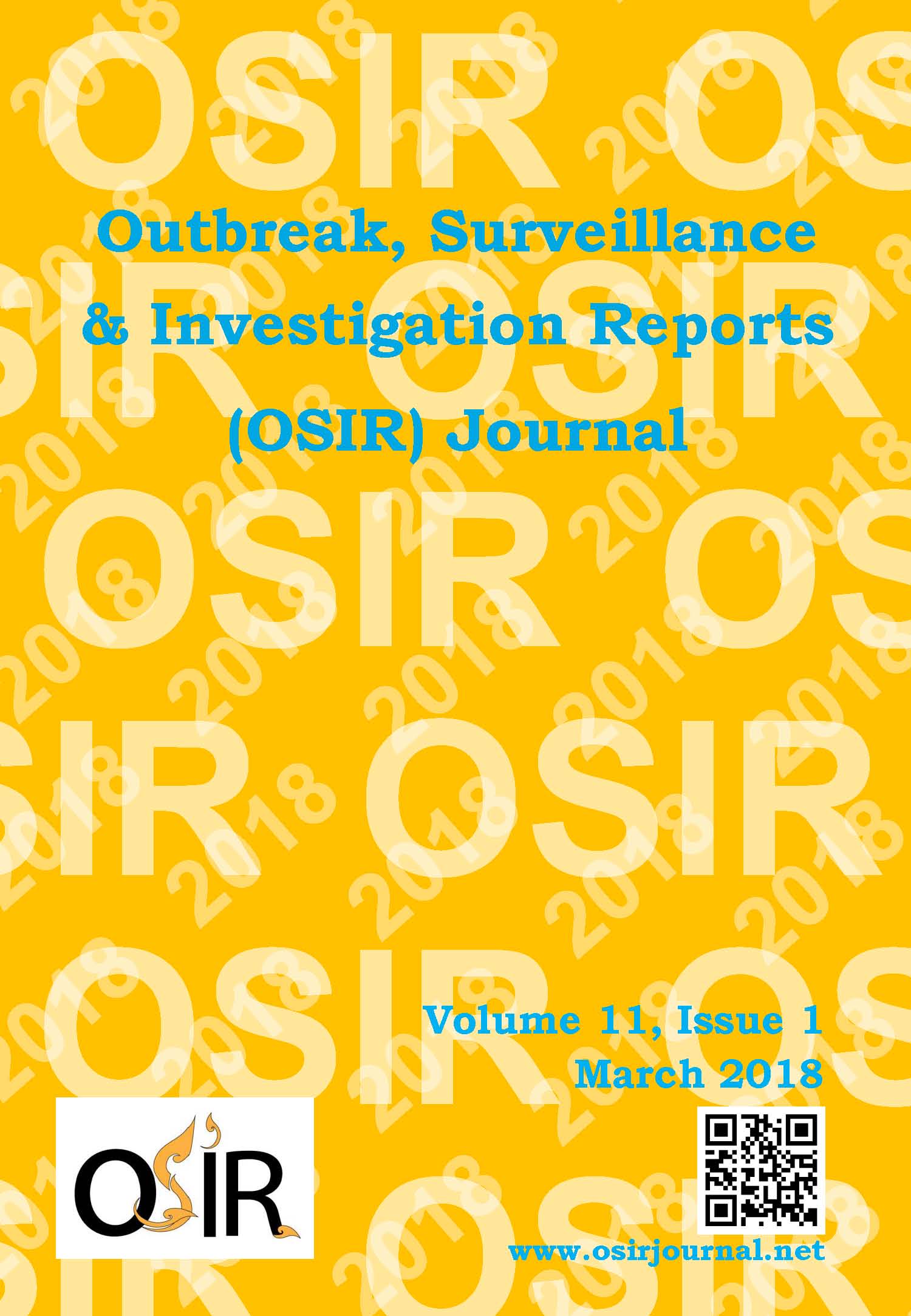Adult Japanese Encephalitis Outbreak Following an Immunization Campaign in Children, Shwe Pyi Tha Village, Sittwe Township, Rakhine State, Myanmar, 2016
DOI:
https://doi.org/10.59096/osir.v11i1.263070Keywords:
Japanese encephalitis, outbreak, investigation, RakhineAbstract
On 31 Aug 2016, one Japanese encephalitis (JE) case was notified from Shwe Pyi Tha Village, Sittwe Township, Rakhine State. The case was the first reported JE case from this village after implementing the single-dose JE vaccination in the area during May 2015. An outbreak investigation was conducted during September-October 2016 to confirm the outbreak and identify possible risk factors. The patient and family members were interviewed. Suspected cases were searched in the family and the village, and the medical records were reviewed. Serum samples were collected and sent for JE antibody, and dengue antigen-antibody testing. Environmental investigation, including entomological study, was conducted. The patient was a 46-year-old male worker. He got fever with headache on 14 Aug 2016. He developed convulsion and was admitted to Sittwe General Hospital with final diagnosis of viral meningitis. He was an alcoholic and usually did not sleep in a mosquito net. Active case finding among 1,758 villagers found 12 feverish villagers, including two suspected cases. Out of 11 serum samples tested, one was positive and two were equivocal for JE antibody testing. Environmental investigation revealed domestic animals, poor drainage and houses without mosquito screens. Culex tritaeniorhynchus and Culex quinquefasciatus were identified in the village as well. Considering the environmental conditions, Rakhine State should be a high priority area for routine JE immunization program.
References
World Health Organization. Japanese encephalitis vaccines: WHO position paper – February 2015. Wkly Epidemiol Rec. 2015 Feb;90(9):69-88.
Campbell GL, Hills SL, Fischer M, Jacobson JA, Hoke CH, Hombach JM, et al. Estimated global incidence of Japanese encephalitis: a systematic review. Bull World Health Organ. 2011 Oct;89(10):766-74.
Myanmar. Vector Borne Disease Control and National Malaria Control Program. Department of Health. Ministry of Health. Annual VBDC report 2013. Nay Pyi Taw: Ministry of Health, Myanmar; 2014.
SAGE working group on Japanese encephalitis vaccines. Background paper on Japanese encephalitis vaccines. Geneva: World Health Organization; 2014.
Halstead S, Jacobson J, Dubischar-Kastner K. Japanese encephalitis vaccines. In: Plotkin S, Orenstein W, Offit P, editors. Vaccines, 6th ed. Saunders Elsevier; 2013, p. 312-51.
Myanmar. Epidemiological Unit. Department of Public Health. Ministry of Health and Sports. Acute encephalitis syndrome surveillance field guide. Nay Pyi Taw: Ministry of Health and Sports, Myanmar; 2016.
Myanmar. National Health Laboratory. Reports of acute encephalitis and Japanese encephalitis IgM positive cases, 2012-Oct 2016. Yangon: Ministry of Health and Sports, Myanmar; 2016.
Rakhine State Vector Borne Diseases Control Programme. Rakhine State Public Health Department. VBDC annual reports, 2015. Sittwe: Rakhine State Public Health Department; 2016.
Oo PM, Hlaing T, Lwin S, Pittyawonganon C, Sirichaisinthop J, Khine SK. A large outbreak of Japanese encephalitis in Rakhine State, Myanmar: implication for vaccine policy. OSIR 2016 Jun;9(2):8-15.
United States Department of Health and Human Services. 10th special report to the U.S. Congress on alcohol and health. 2000 Jun [cited 2017 May 3]. <https://pubs.niaaa.nih.gov/publications/10report/10thspecialreport.pdf>
Liu W, Gibbons RV, Kari K, Clemens JD, Nisalak A, Marks F, et al. Risk factors for Japanese encephalitis: a case-control study. Epidemiol Infect. 2010 Sep;138(9):1292-7.
Fischer M, Hills S, Staples E, Johnson B, Yaich M, Solomon T. Japanese encephalitis prevention and control: advances, challenges, and new initiatives. In: Scheld WM, Hammer SM, Hughes JM, editors. Emerging infections. Washington DC: ASM Press; 2008, p. 93-124.
Downloads
Published
How to Cite
Issue
Section
License
Copyright (c) 2023 Outbreak, Surveillance, Investigation & Response (OSIR) Journal

This work is licensed under a Creative Commons Attribution-NonCommercial-NoDerivatives 4.0 International License.









